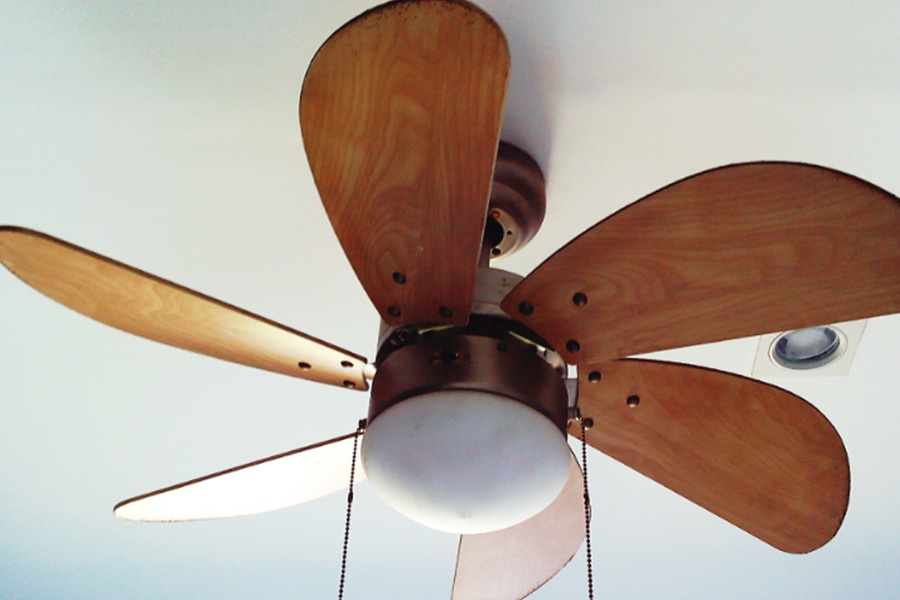
It is not surprising that homeowners are looking for methods to improve their living spaces while using less energy in a world where sustainability and financial responsibility are playing a bigger role in daily choices. The installation of ceiling fan in NZ houses is one such strategy that is sometimes disregarded yet is very successful. Despite their simple form, these gadgets have the potential to have a big impact on the economy and the environment. They may not only improve interior air quality by circulating air in a pleasant manner, but they can also be a good substitute for more energy-intensive heating and cooling systems, which lowers the growing expenses of household energy use.
In this investigation of the advantages of ceiling fans, we will examine how this kind of investment is not only a sensible way to regulate temperature but also a way to promote environmental responsibility and save money over time. One may enjoy the many benefits of selecting an eco-friendly alternative for home comfort by knowing how ceiling fan in NZ affect indoor air quality and energy efficiency.
Lowering Energy Use: The Eco-Friendly Method of Cooling Your Home
Even though air conditioners are used in many NZ homes for cooling, these devices often utilize excessive amounts of electricity, which raises utility costs and increases carbon emissions. The installation of ceiling fans in New Zealand houses provides an amazing substitute. Ceiling fans provide a cooling effect that lessens the need for energy-intensive air conditioning systems by more effectively moving air. In fact, ceiling fans may reduce the necessary temperature setting when used in combination with air conditioners, which lowers total energy consumption without compromising comfort.
This has simple but significant physics. Instead than lowering the temperature of the room, ceiling fans provide a wind-chill effect that cools the occupants by speeding up skin evaporation. A room may seem as much as four degrees colder as a result of this sensation, enabling you to adjust your thermostat appropriately. This change has the potential to significantly lower energy expenses when taking into account the cumulative impact over time.
A Long-Term Investment in Economical Climate Control
It is impossible to exaggerate the long-term financial advantages of installing a ceiling fan for temperature control. Although they are good at cooling, air conditioners may be expensive to operate, particularly in the summer. In contrast, a ceiling fan uses a lot less energy, which eventually results in cheaper electricity costs. Given the growing cost of electricity in New Zealand, ceiling fans are a particularly alluring alternative for many households due to their lower operating costs.
Additionally, during the colder months, ceiling fan in NZ may help keep people warm. Better heat distribution is made possible by using the fan in reverse mode, which pushes warm air that naturally rises to the ceiling back down towards the living area. Even though it’s a basic function, it may assist lower the amount of energy that heating systems need to use. Consequently, ceiling fans’ dual purpose of cooling in the summer and helping with heating in the winter increases their economic worth and offers an affordable option for year-round comfort.
Getting the Most Comfort with the Least Amount of Energy
Although comfort is sometimes linked to high energy use, installing a ceiling fan enables homeowners to experience ideal interior temperatures without having to worry about using too much electricity. In contrast to air conditioners, which often produce a sharp temperature differential, ceiling fans function by preserving a natural air flow that is more steady and less manufactured. Instead of depending on systems that use refrigerants, the end result is a cooling experience that uses the mechanics of air circulation to improve the surrounding environment.
Comfort throughout the sweltering summer months is guaranteed by this low-tech cooling method, which also lessens the load on electricity systems during times of peak energy use. In houses in New Zealand, where energy costs may change often, a ceiling fan provides a flexible option that guarantees constant comfort while reducing the cost of energy consumption. Achieving a balance between comfort and sustainability may be accomplished by homeowners by combining the energy-efficient functioning of the fan with careful house design, such as strategically placing windows for natural ventilation.
Conclusion
In conclusion, there are several benefits to upgrading to a ceiling fan in NZ, both financially and environmentally. Ceiling fans not only provide a more cost-effective option to conventional heating and cooling systems, but they also enhance interior air quality and allow year-round temperature management. Additionally, contemporary ceiling fan designs are a great addition to any house due to its visual appeal and practical adaptability, which improve comfort and elegance.
Installing a ceiling fan is a progressive investment that will pay off in the long term for anyone looking to lower their carbon footprint and save money on energy costs in New Zealand. Homeowners may take advantage of the instant advantages of better temperature control and air circulation by selecting this sustainable alternative, which also helps create a more ecologically aware future. After all, installing ceiling fans in a house is a step towards a more economical and sustainable way of living, not just a convenience choice.





